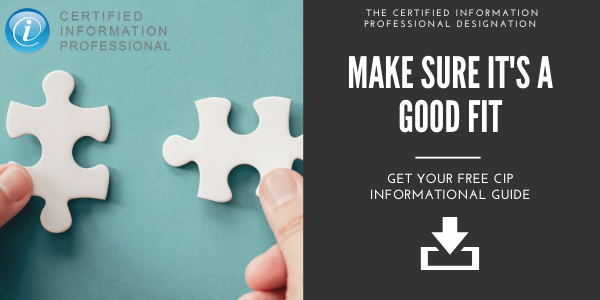
How to Dominate the Domains of the NEW CIP - D5: Implementing an Information Management Solution
Certified Information Professional (CIP)
Welcome back to the last post in this series on the updated Certified Information Professional (CIP) exam. In this post, I'll be focusing on Domain 5, Implementing an Information Management Solution. You can review the previous posts in this series here:
- Domain 1: Creating and Capturing Information
- Domain 2: Extracting Intelligence from Information
- Domain 3: Digitalizing Core Business Processes
- Domain 4: Automating Governance and Compliance
We end this series by looking at how to implement an information management program. Such a program includes more than just technology, though that is often a part of the overall solution. But it's also assessing the current state of the organization, making the business case for change, and designing a solution that will support and enable its goals and objectives.
Domain 5: Implementing an Information Management Solution
- Information Management Strategy: Any information management initiative needs to support the overall goals of the organization. The strategy should outline the impact of the initiative on ways of working, how business processes may change, roles and responsibilities for the initiative, and the outcomes of the business and technical assessment.
- The Business Case for Intelligent Information Management: The business case identifies the expected benefits of the initiative and serves as a baseline for improvement. As the old maxim notes, you can't manage what you don't measure, so one of the key outcomes of the business case is to identify key performance indicators and critical success factors that support improved outcomes.
- Business Requirements for Information Management: Requirements serve to identify and document how the solution will satisfy the organization's needs - what is included in the implementation and what might be left for a subsequent iteration. We also compare on-premises vs. cloud from a business requirements perspective.
- System Design and Implementation: While every implementation is different, because every organization is different, some common steps need to be included including design, development, deployment, the pilot, local preparation, and the actual go-live process.
- Change Management: Most technology projects fail due to human issues rather than technical ones. Change management begins when the project does. While different audiences receive different messages and on different timelines, change management has to be an ongoing process if the initiative is to succeed.
By the end of this domain, you should have a solid understanding of how to develop and implement an information management solution, from strategy to implementation and post-implementation activities. This is the end of this series; in the next post, we'll review how to prepare for the CIP exam.


![[Informational Guide] Is certification right for you? Get this free CIP Exam Guide to find out.](https://no-cache.hubspot.com/cta/default/332414/dcb32a30-373b-4f1b-9d7f-90425213921c.png)
